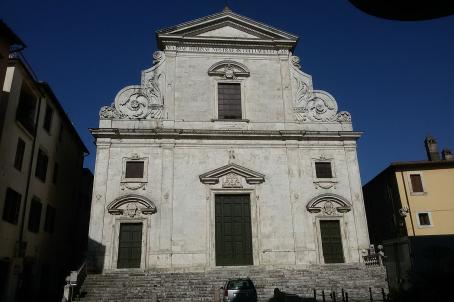Civita Castellana Cathedral

The Cathedral of Civita Castellana was built from around 1185, on top of an earlier sacred building, and was completed with the construction of the portico in 1210. After falling into disrepair over the centuries, the interior of the church was completely renovated in the 18th century in the Baroque style: the transformation of the three-nave church into a single-nave church with interconnected side chapels dates from this period.





